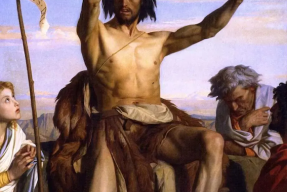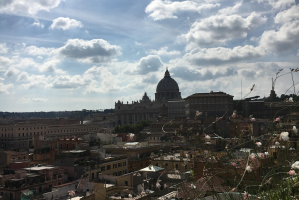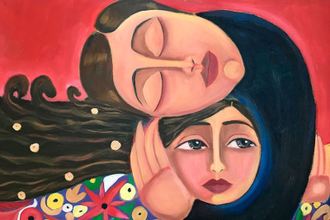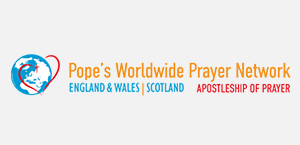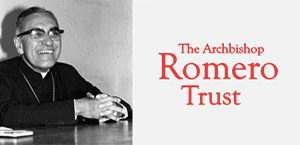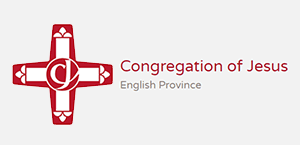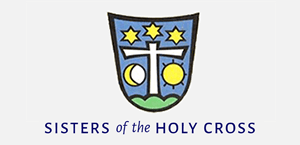Gospel in Art: Feast of the Transfiguration of the Lord
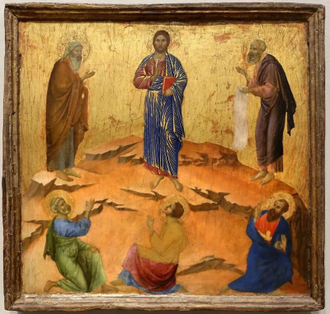
The Transfiguration by Duccio di Buoninsegna, 1307 © National Gallery, London
Source: Christian Art
Gospel of 6 August 2025
Luke 9:28b-36
At that time: Jesus took with him Peter and John and James and went up on the mountain to pray. And as he was praying, the appearance of his face was altered, and his clothing became dazzling white. And behold, two men were talking with him, Moses and Elijah, who appeared in glory and spoke of his departure, which he was about to accomplish at Jerusalem.
Now Peter and those who were with him were heavy with sleep, but when they became fully awake they saw his glory and the two men who stood with him.
And as the men were parting from him, Peter said to Jesus, 'Master, it is good that we are here. Let us make three tents, one for you and one for Moses and one for Elijah' - not knowing what he said.
As he was saying these things, a cloud came and overshadowed them, and they were afraid as they entered the cloud. And a voice came out of the cloud, saying, 'This is my Son, my Chosen One; listen to him!'
And when the voice had spoken, Jesus was found alone. And they kept silent and told no one in those days anything of what they had seen.
Reflection on the painting
Our small panel by Duccio, painted circa 1307, comes from one of the largest and most ambitious altarpieces ever made. It is the only signed work by Duccio di Buoninsegna, the leading artist in medieval Siena. The entire altarpiece measured five square metres and held five tiers of panels including 54 minutely detailed narrative scenes, such as our panel today depicting the Transfiguration. The altarpiece is known as the Maestà ('Majesty') after its main image of Our Lady with the Christ Child seated on a marble throne. Already at the time, this altarpiece was regarded as a masterpiece. On 9 June 1311, the Maestà was carried in procession through the streets of Siena from Duccio's workshop to the cathedral, where it was installed above the high altar. There are surviving documents which describe this procession and those who took part in it, such as the local bishop and all the city's officials. The ceremony took place in the evening, accompanied by musicians and plenty of candle bearers to light up the gold grounds of the painted panels.
We see Christ standing in the middle with Moses (on his left) and Elijah (on his right). The moment of the Transfiguration is represented here by the golden striations on Christ's robes. Jesus's disciples, Peter, James and John, are at the bottom of the mountain, looking on at what is happening. They raise their hands in awe, blinded by the light. This panel was originally placed next to a scene showing the raising of Lazarus, a miracle in which Christ raised a man from the dead in anticipation of his own conquest of death. The other scene flanking our panel, was The Healing of the Man born Blind. After the disciples had witnessed the Transfiguration, their eyes, too, were opened.
The Transfiguration happened for the benefit of the Apostles. Their faith and their trust in Jesus would be forever sealed. That is why Peter said, 'It is wonderful for us to be here', to be here in this place: such a beautiful small comment. Indeed, so often there is more to the place we are in, and to the people we are with, than we realise.
The Transfiguration of the Lord was important because it gave the disciples a glimpse of who Jesus truly is: both fully human and fully divine. This moment showed his glory, even before his death and resurrection. It was a gift to Peter, James, and John, to strengthen their faith before the difficult days ahead.
LINKS
Gospel in Art: https://christian.art/
Today's Reflection: https://christian.art/daily-gospel-reading/luke-9-28b-36-2025-2/




